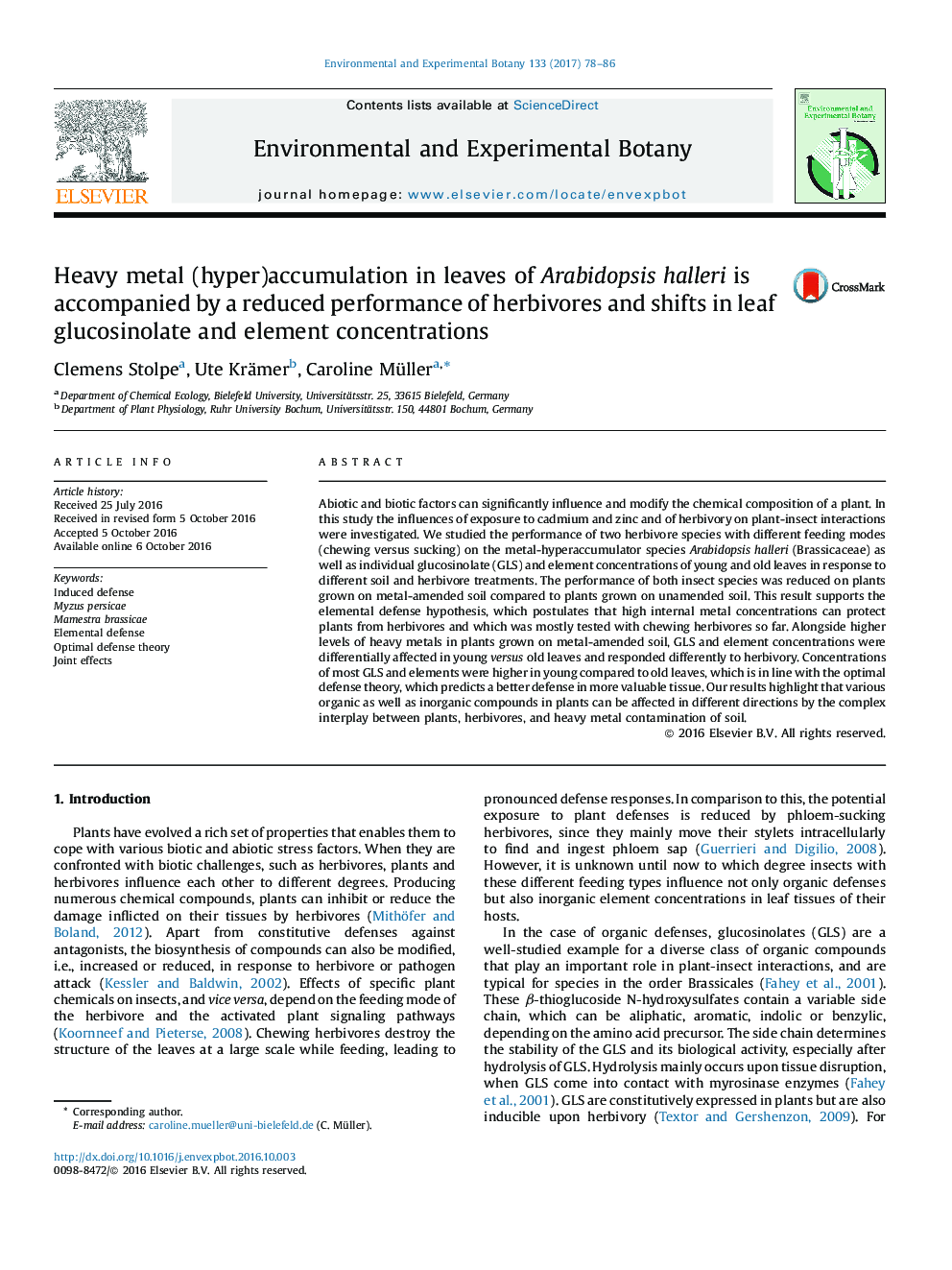| کد مقاله | کد نشریه | سال انتشار | مقاله انگلیسی | نسخه تمام متن |
|---|---|---|---|---|
| 6388816 | 1628044 | 2017 | 9 صفحه PDF | دانلود رایگان |

- The presence of heavy metals may shape plant-herbivore interactions.
- We investigated the effects of soil Cd and Zn on herbivore and plant responses.
- Chewing and sucking herbivores are negatively impacted by metal (hyper)accumulation.
- Leaf glucosinolates and elements respond differently to soil-treatment and herbivory.
- Most glucosinolates and elements are higher in young leaves in line with the optimal defense theory.
Abiotic and biotic factors can significantly influence and modify the chemical composition of a plant. In this study the influences of exposure to cadmium and zinc and of herbivory on plant-insect interactions were investigated. We studied the performance of two herbivore species with different feeding modes (chewing versus sucking) on the metal-hyperaccumulator species Arabidopsis halleri (Brassicaceae) as well as individual glucosinolate (GLS) and element concentrations of young and old leaves in response to different soil and herbivore treatments. The performance of both insect species was reduced on plants grown on metal-amended soil compared to plants grown on unamended soil. This result supports the elemental defense hypothesis, which postulates that high internal metal concentrations can protect plants from herbivores and which was mostly tested with chewing herbivores so far. Alongside higher levels of heavy metals in plants grown on metal-amended soil, GLS and element concentrations were differentially affected in young versus old leaves and responded differently to herbivory. Concentrations of most GLS and elements were higher in young compared to old leaves, which is in line with the optimal defense theory, which predicts a better defense in more valuable tissue. Our results highlight that various organic as well as inorganic compounds in plants can be affected in different directions by the complex interplay between plants, herbivores, and heavy metal contamination of soil.
117
Journal: Environmental and Experimental Botany - Volume 133, January 2017, Pages 78-86